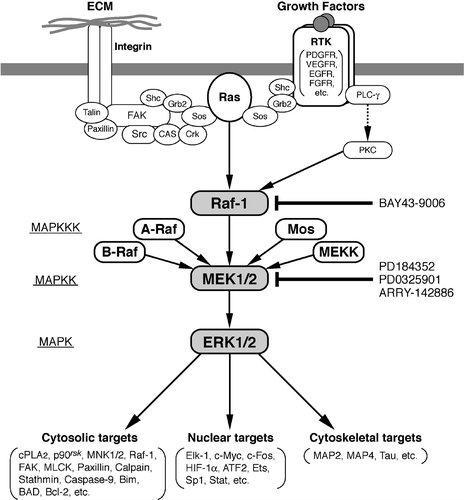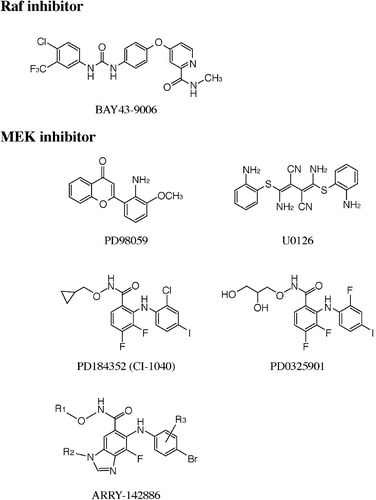Figures & data
Figure 1. Schematic representation of the extracellular signal‐regulated kinase (ERK) pathway focusing on its converging function of diverse intracellular signals. The mitogen‐activated protein (MAP) kinase cascade is composed of three sequential kinases: MAP kinase kinase kinase (MAPKKK), MAP kinase kinase (MAPKK), and MAP kinase (MAPK). ERK1/2 phosphorylate a variety of nuclear, cytosolic and cytoskeletal targets. Integrin‐focal adhesion kinase (FAK) pathway, which is activated by adhesion of integrins to specific extracellular matrix (ECM) molecules, is another important signaling to fully activate the ERK pathway Citation72,73. Activation of the ERK pathway is most often associated with cell proliferation, cell survival and cell migration. Well‐characterized inhibitors of Raf and MEK1/2 are shown. Several negative regulators of this pathway exist, such as MAP kinase phosphatases (MKPs/DUSPs) and Sprouty proteins. Expression of MKPs and Sprouty proteins is induced in an ERK‐dependent manner, and thus these proteins participate in the negative feedback regulatory loop of the ERK pathway (not shown in this Figure; see text).

Figure 2. Specific inhibitors of the extracellular signal‐regulated kinase (ERK) pathway. Raf inhibitor: BAY 43‐9006. MEK inhibitors: PD98059, U0126, PD184352 (CI‐1040), PD0325901, ARRY‐14886.

Table I. Clinical trials of ERK pathway inhibitors.